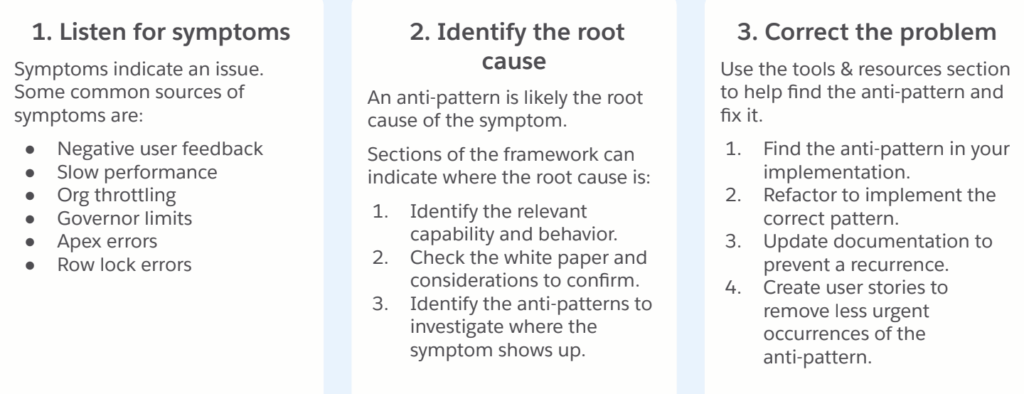Learn how Salesforce Well-Architected provides prescriptive guidance, resources, and tools to help you solve problems quickly. Last week we did one session in Apex hours with Marc Braga. Here is some high light of session.
What is Salesforce Well-Architected ?
Salesforce Well-Architected is the work of SF product teams and implementation experts from across ecosystem. Architect team goal is to have Salesforce Well-Architected feel like another, experienced architect in your network with recommendations and opinionated views you can use to validate your thinking.
Salesforce Well-Architected provides guidance and resources for Salesforce Architect to create architectures that are Trusted, Easy and Adaptable.
Why does Well-Architected matter?
It can be difficult to understand if there are architectural benchmarks common to all healthy solutions, given the wide variety across implementations. At Salesforce, everything we do as a company and as people is guided by our core values. We believe this can also apply to architecture.
The Framework
How to step through architectural thinking. Learn more about Well-Architected.

Trusted: Protect business & stakeholders
Trusted solutions protect business and stakeholders. A solution well-architected to be Trusted is secure, compliant, and reliable.
Secure solutions control access and protect data. Topics in this section:
- Organizational security
- Session security
- Data security
Compliant solutions follow legal and ethical guidelines. Topics in this section:
- Legal adherence
- Ethical standards
- Accessibility
Reliable solutions operate efficiently and dependably. Topics in this section:
- Availability
- Performance
- Scalability
Easy: Deliver value fast
Easy solutions deliver value fast. A solution well-architected to be Easy is simple, automated, and engaging.
Simple solutions follow the most direct path in engineering. Topics in this section:
- Readability
- Maintainability
- Intentionality
Automated solutions meet goals & objectives faster, at scale. Topics in this section:
- Logic
- Data integrity
- Business value
Engaging solutions delight users and drive adoption. Topics in this section:
- Streamlined
- Helpful
Adaptable: Evolve with the business
Adaptable solutions evolve with the business. A solution well-architected to be Adaptable is resilient and composable.
Resilient solutions handle change well. Topics in this section:
- Incident response
- Continuity planning
- Application lifecycle management
Composable solutions adjust quickly & with greater stability. Topics in this section:
- Separation of concerns
- Interoperability
- Packageability
The Structure of Well-Architected
The right priority for architectural thinking. The framework is a series of white papers for each Behavior that show:
- Prescriptive guidance
- Considerations
- Patterns to follow
- Anti-patterns to avoid
- Relevant tools & resources from Salesforce
Solve problems with Well-Architected
Use the framework to identify the root cause and how to fix it.

Listen for symptoms → identify the anti-pattern → use the resources to fix it
| Symptom | W/A Behavior | Anti-Pattern | Tools & Resources |
| Groups of users are saying a report is slow & showing data they don’t need. | Reliable → Performance → Latency Optimization | Reports serve multiple purposes or contain extra rows and columns that aren’t needed to make decisions. | Create separate reports so each report serves a single purpose. Use Query Optimizer to produce effective queries. |
| “It worked in sandboxes, but it’s slow or failing in production” | Resilient → Application Lifecycle Management → Testing Strategy. | Production-like conditions are not tested outside production environment on a regular basis. | Use Performance Assistant to create a testing plan & schedule a testing window. Submit a performance testing request. |
| Limit: Total number of DML statements issued | Reliable → Performance → Throughput Optimization | DML statements are not bulkified | Use the resources to refactor using bulkification. Use static code analysis to find more. |
| Limit: Total number of SOQL queries issued | Automated → Clear Logic → Planning for Scale | Automated → Clear Logic → Planning for Scale | Refactor using SOQL For Loops instead. Use static code analysis to find more. |





